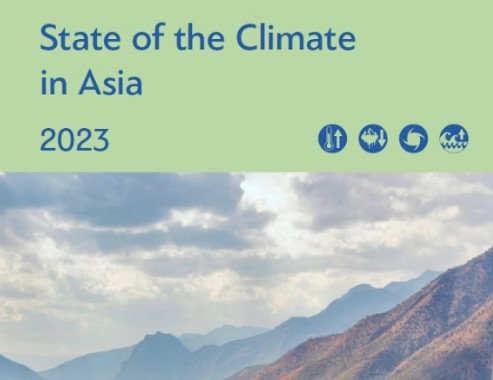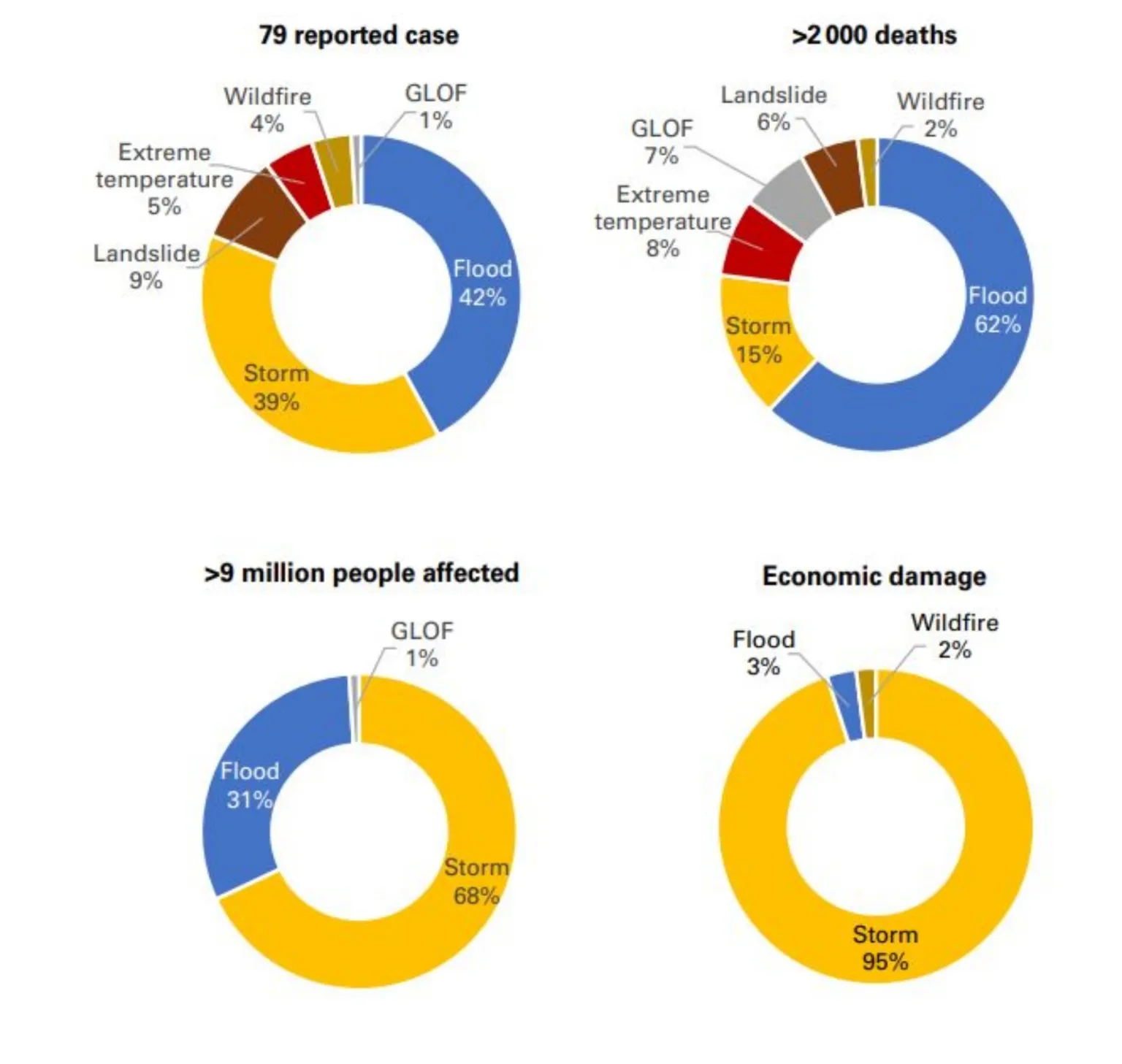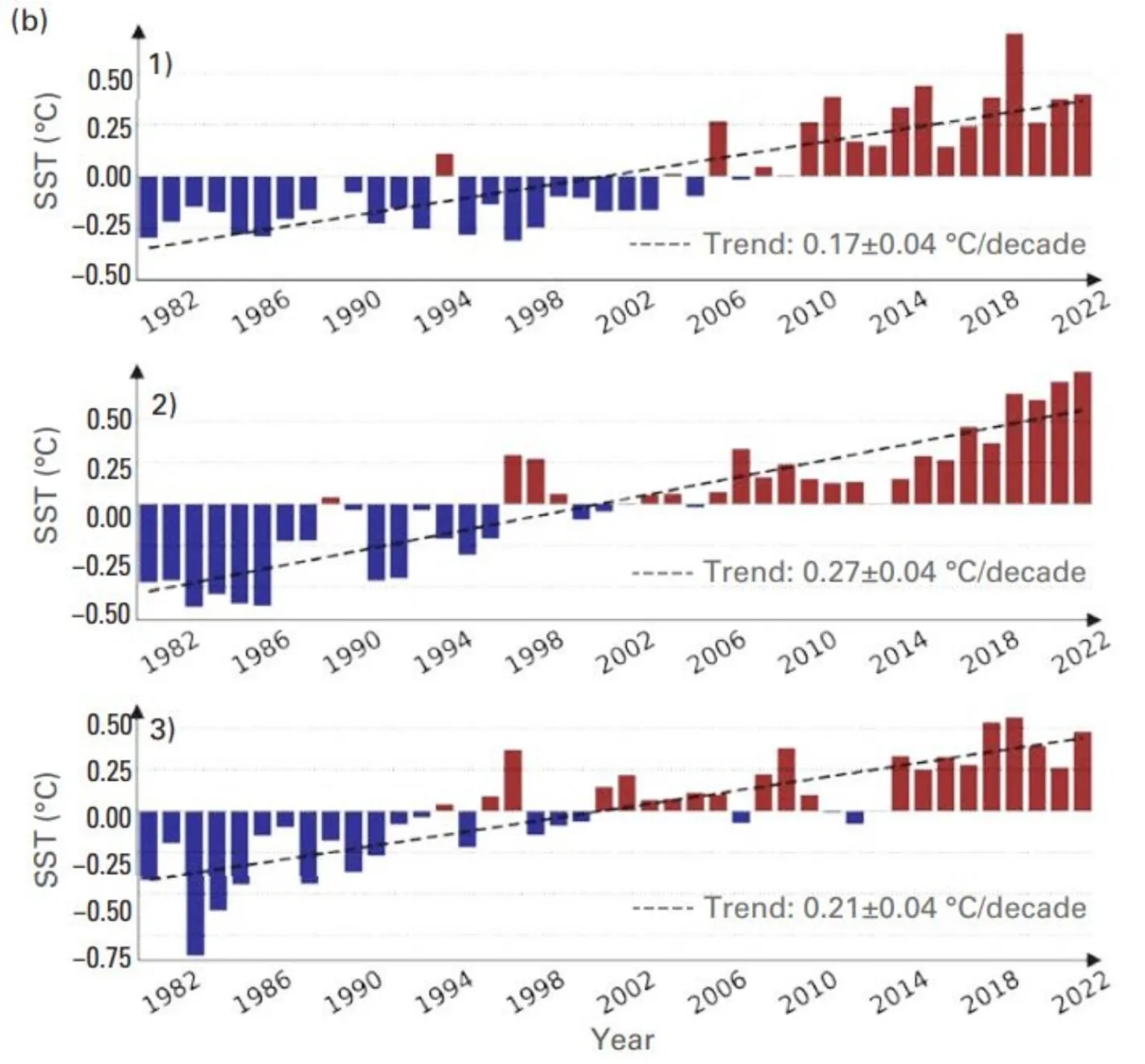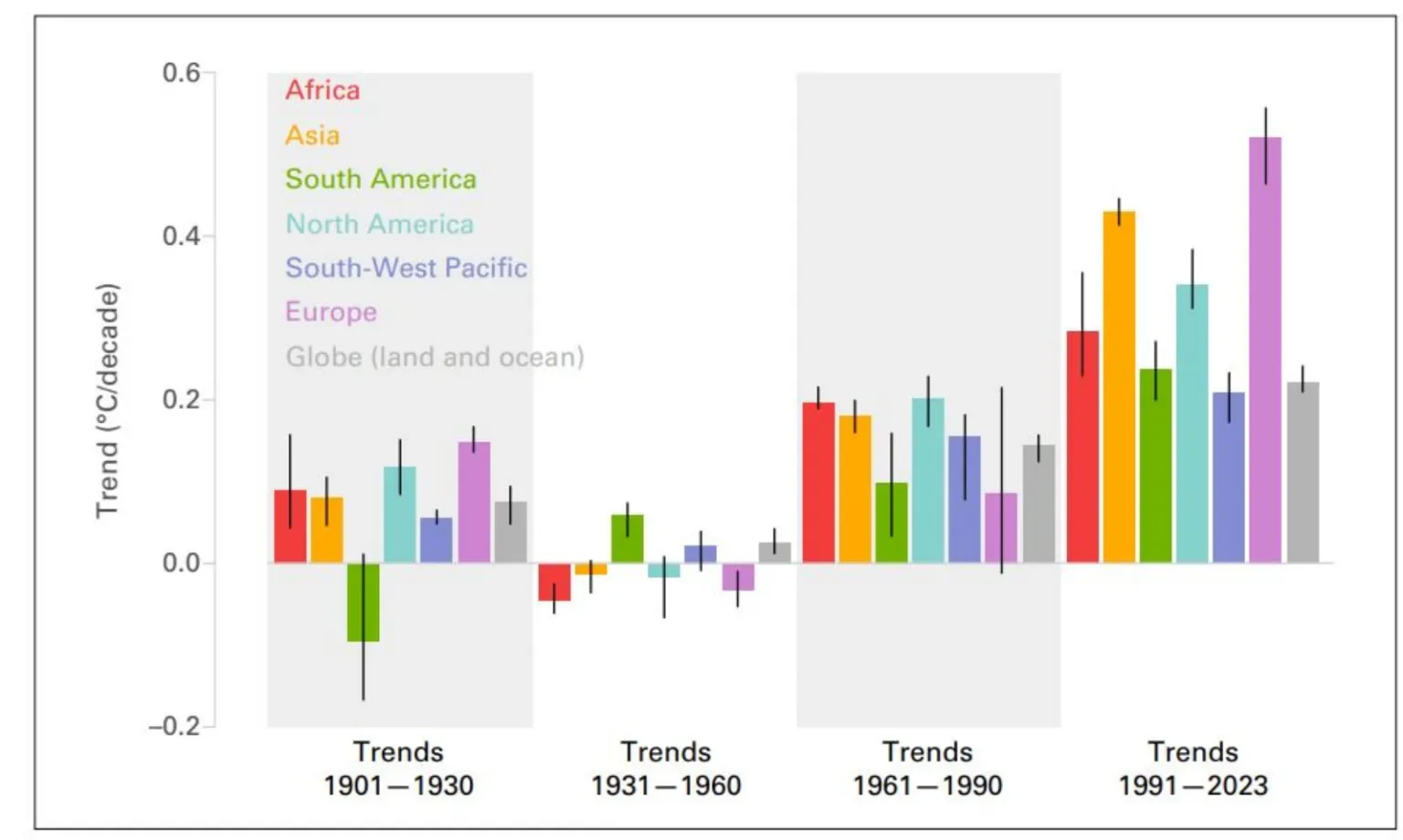Free Courses Sale ends Soon, Get It Now


Free Courses Sale ends Soon, Get It Now



Disclaimer: Copyright infringement is not intended.
Context:
Five main findings of the report:

Fig: Overview of such events that took place in Asia last year and their impact

Fig: : Area-averaged time series of sea-surface temperature anomalies relative to the 1982–2022 reference period (in degree Celsius) within the three areas: 1) the Arctic area north of 60°N; 2) the north-west Pacific Ocean area; and 3) the Indian Ocean area. The linear trend over the full period is indicated as a dashed line.

Fig: Trends in mean surface air temperature for the six WMO regions and the global mean (degree Celsius) over four sub-periods using the six datasets.
Conclusion:
Source:
|
PRACTICE QUESTION Q) Discuss the key findings of the recent World Meteorological Organisation report on the climate crisis in Asia. How do these findings underscore the urgent need for coordinated efforts to address climate change in the region? ( 250 words) |
© 2024 iasgyan. All right reserved